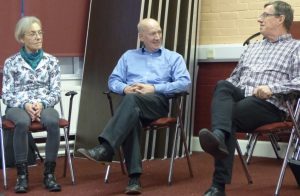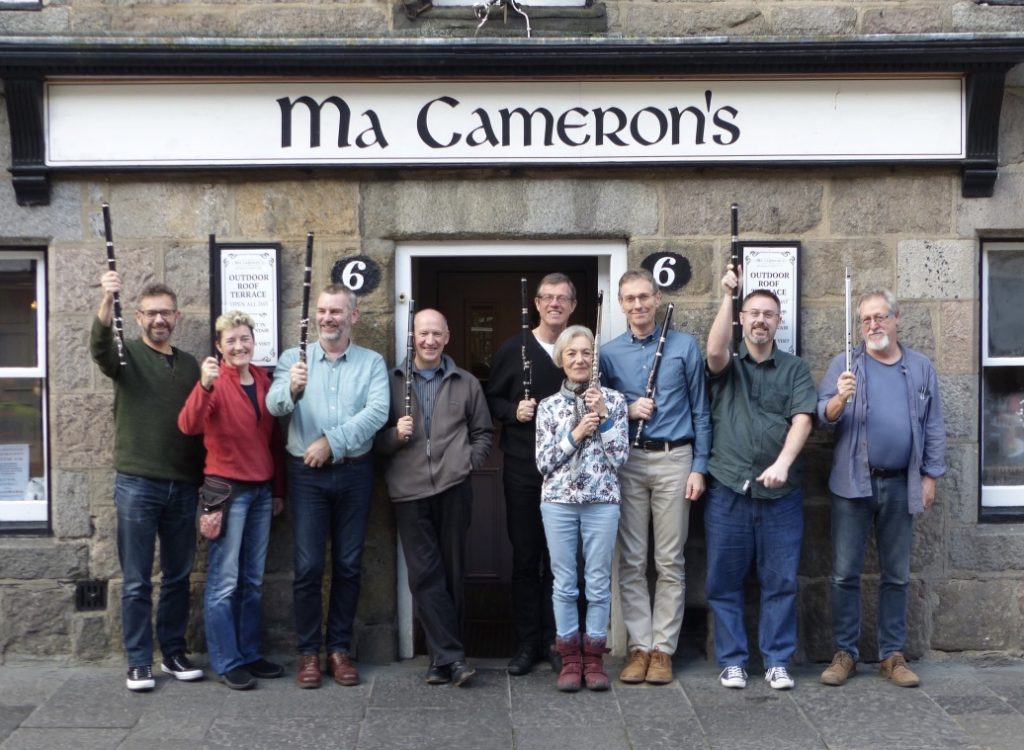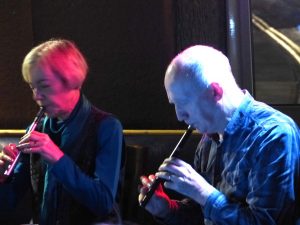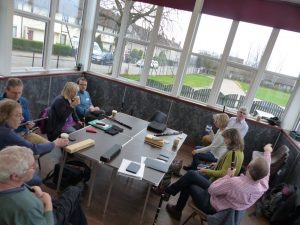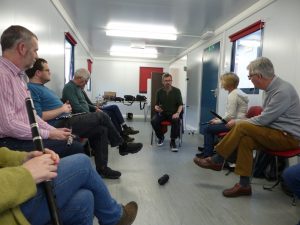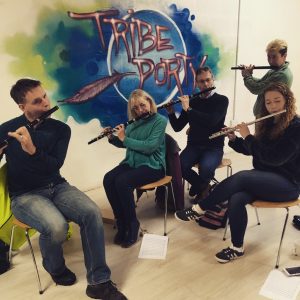
This month we looked at ways to learn a tune by ear and focused on Tomnahurich, an evocative slow air by Pipe Major Donald Macleod that was recorded by Calum Stewart and Lauren MacColl on Wooden Flute and Fiddle.
The tune appears in Volume 3 of Pipe Major Donald MacLeod’s Collection and translates as The Hill of the Yew Trees or the Hill of the Fairies. It refers to the distinctive hill by Inverness that was until recently a cemetery, but was traditionally where the Fairy Folk lived. The Fiddlers of Inverness is a tale told about it (see here and here for more).
Update 12 October 2018: flute player Catriona Patience has spotted a resemblance to the song Tha an Crodh-laoigh air Aodann Chorra-bheinn, as archived in this recording at the fabulous Tobar an Dualchais/ Kist o Riches Scottish oral traditions website.
Learning by ear v sheet music
The tune is deceptively simple, but offers a great way into learning by ear, which is the way most traditional musicians teach and learn. One thing that has become clear to me is that many people find it difficult to play by ear because, while traditional music relies upon this skill, it isn’t emphasised in formal music education. Indeed, many traditional musicians in Scotland rely on sheet music —in ceilidh bands it is not uncommon for example.
Of course, musicians interested in discovering traditional music that have originally learned their instrument in another tradition, for example Classical, have developed skills in sight reading at the expense of trusting and understanding their ears.
This difference struck earlier this year me when I attended the fantastic Cruinniú na bhFliúit (Flutemeet) for the first time. It takes place in County Cork just after Easter and is an inspiration behind the FluteFling Scottish flute and whistle weekends. If you haven’t been, you should go at least once. All the teaching though is by ear and no sheet music is available. You can record the tunes and ABC notation is used, but these are really for use afterwards. It’s the way they do it there and generations of Irish musicians can testify to the way it works.
Flute players in Scotland have different needs as playing by ear is new to many and needs to be supported. So I usually offer sheet music as a back-up option, again for later reference. Recently we had some success in Aberdeen and Edinburgh in sending out some sheet music in advance, but there is a risk that it becomes a distraction and it’s good to get the balance right.
If the aim is to play by ear, at what point do you refer to the sheet music? Sheet music is a representation of music itself. The more information that is represented, the more complex it becomes. However, just as speaking a language comes before reading and writing, so it is with music. Accent, dynamics, emphasis, breathing, articulation/ decoration and expression are immediately accessible through music but a piece of sheet music needs to be interpreted. I’m not against sheet music at all, but for teaching, learning and playing traditional music as well as we can, we need to step away from the paper and develop our ears.
So, to a small class on a sunny May afternoon, I thought I would try an approach used by Conal Ó Gráda at Cruinniú na bhFliúit to teach the Connemara Hornpipe from a recording. As this was intended to build confidence in learning by ear, the recording I chose was Tomnahurich, a much slower tune.
The process is is a simple idea based on very natural processes:
- Listen to the recording a few times
- Begin to move, tap feet etc to the tune
- Lilt the tune, singing along. Before even picking up the flute, this internalises:
- Rhythm
- Melody
- Breathing
- Phrasing
- Dynamics
- “Memory hooks”, for want of a better expression: basically, a social and sensory association of place, time and people that helps anchor the tune when learning it and when recalling it. When I play this tune now, I will have associations not just of the title (and those associations) but also of the original recording, where I heard it, where I learned it and who with, what the day was like, the bright sunlight coming though the white room skylight on a rare warm May afternoon on a long weekend. When thinking of how to play this tune in future, these associations will be there and may help to jog my memory and even inform my performance.
So, preparing ourselves with the tune through familiarisation before even picking up the instrument laid a foundation for our learning. By the time we came to play, we were already inside the tune in a sense. What we were trying to do is match our fingers to our ears and the existing sense of the tune, joining up the processes.
We paused along the way to reflect on how the melody fits into the bagpipe scale and range of A Mixolydian (underlying chord shape here of A-E, no C or C#) and shifts to G shapes (underlying chord shape of G-B-D). Other considerations were, what phrases repeat, where and how do changes occur?
When training the ear in this way, songs are a natural reservoir to turn to – the melody remains mostly constant, but phrasing and dynamics can shift to emphasise meaning. Be aware that many songs can be in other keys, which is where Bb, C and Eb whistles become handy. Learn the fingering on the whistles and then transfer this to the D whistle or flute. This transposes the tune to a friendlier key and you don’t have to think about theory to do so.
Tomnahurich Resources
I have recorded Tomnahurich and the notation is up on the Resources page.
Create time and space for your music
I’m still digesting my time at Cruinniú na bhFliúit with lots of great new tunes and ideas. However at the workshop I also shared some of Paul McGrattan‘s advice on practising an instrument, creating time and space, setting achievable goals, focus, structure, exercises and routines. Lots to think about.
Session etiquette
June will see an end of term session at The Dalriada Bar, basically a slow session for flute and whistle, based upon, but not limited to, the repertoire covered by FluteFling. It will be suitable for beginners and more experienced players alike. Bringing sheet music along is fine, your friends too of course. It’s free, but if you sign up, I can get an idea of numbers.
As it happens, we ended the afternoon with various discussions, including confidence and session etiquette. That’s a whole topic in itself. Nigel Gatherer has some good advice:
In general, the watchwords are courtesy, consideration, sensitivity and patience.
There are other lengthy accounts on the web, but two types of session cropped up. One is organic, much more like a musical conversation and perhaps akin to traditional house ceilidhs or kitchen sessions. This is what I am most used to and understand. Working out what is happening can be tricky to newcomers, but the rules of normal social interaction will stand you in good stead (see those watchwords above). There are quite probably session leaders or a core of regulars and friends, their own core repertoire, stops for conversation and so on.
It isn’t a performance, it’s a social and cultural gathering. Just as in life, some are friendlier and more welcoming than others and you need to be read the situation and signs.
The other type of session is more structured and maybe even quite formal. Here there will a recognised leader and organiser and there will be turn-taking to ensure a sense of fairness when it comes to starting tunes or songs. Beyond this, my experience fails me. I can only add that these seem to lie somewhere between a session as described above and a folk club. In addition, I might add that possibly may tend to be in settings that call on a small pool of musicians and that this structured approach might be seen to be supportive of those musicians.
The Dalriada session in June will definitely be sociable and also supportive!
